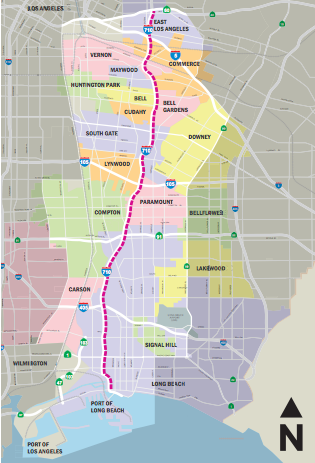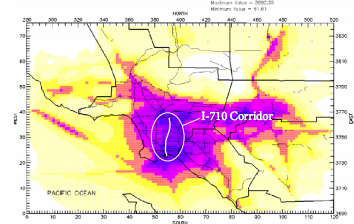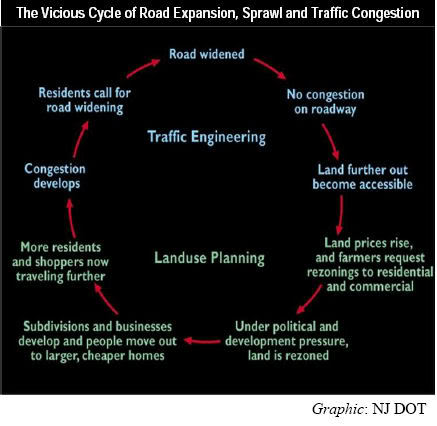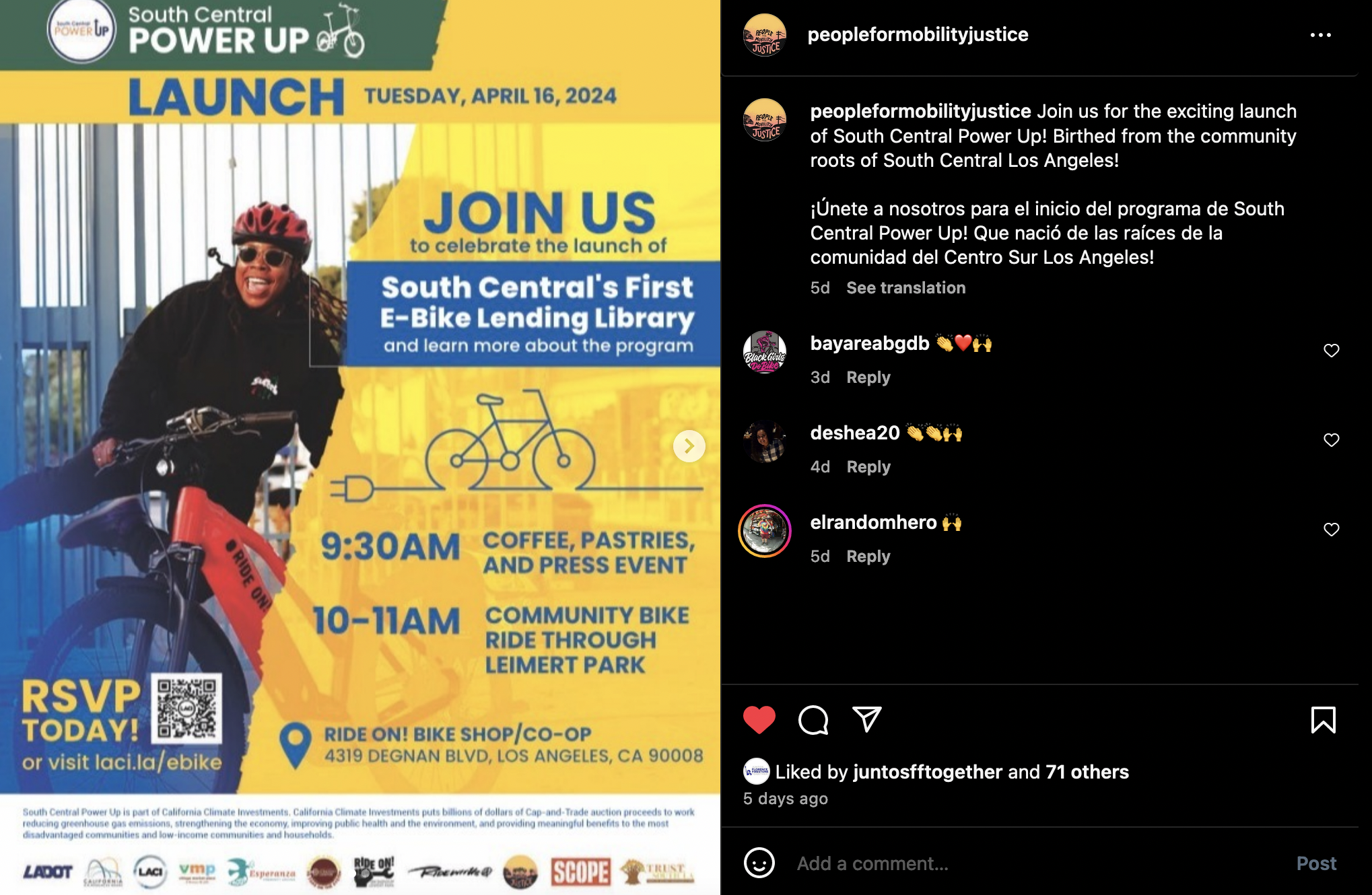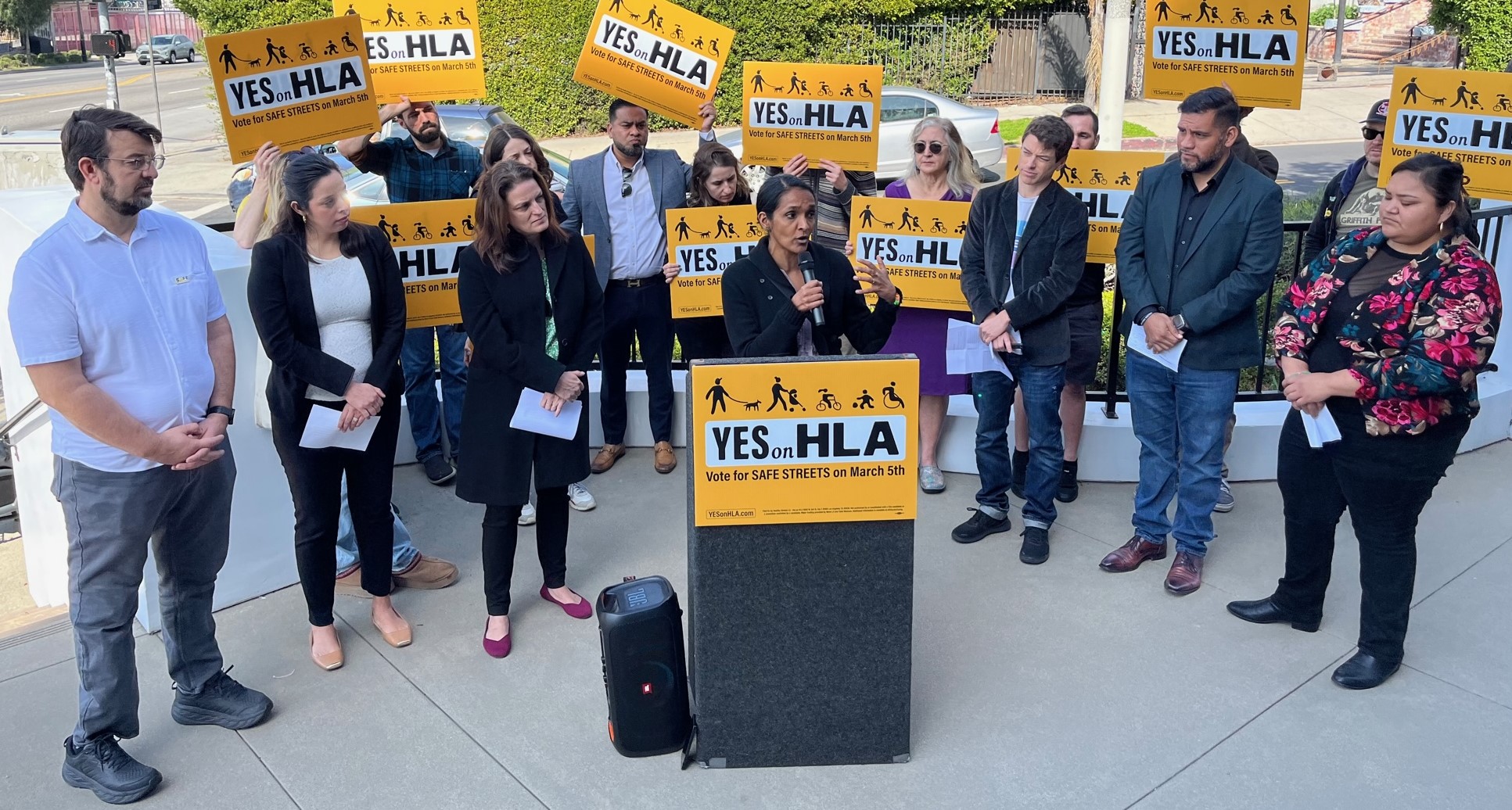EIR Released for the “Other” 710 Project, Let’s Get Ready to Widen
11:46 AM PDT on July 3, 2012
The I-710 is a marvel of 20th century transportation planning. The freeway, which is sometimes as large as ten lanes, connects both the ports of Long Beach and Los Angeles to Route 60, passing the I-405, SR-91, I-105, I-605, I-10, and SR-60 before heading North. Traffic is so congested north of SR-60, that some local officials, Caltrans staffers and truck companies actually want to dig a tunnel underneath several small cities to extend SR-710 to another highway.
But today, we're not going to talk about the San Gabriel Valley's Big Dig, we're going to talk about the "other" 710 Project. Earlier this week, Caltrans released its Draft Environmental Impact Report for the I-710 Corridor Project. The project recommends adding another four lanes of traffic to the existing ten lanes creating one of the largest freeways in North America. The justification for this $5 billion project that would add seventy two miles of highway lanes is that it will improve air quality by creating more lanes for cars to drive in, safety by increasing lane width and travel speeds, and reduce congestion by encouraging more cars to use the already congested corridor.
The final result of the proposed project: ten mixed use travel lanes and four truck only lanes connecting Long Beach to SR-60, over eighteen miles away. $590 million of the project budget comes from Measure R.
The real reason for the project is a glut of trucks that enter and leave the duel ports everyday. The trucks make life for the other users of the 710 miserable while spewing pollution into the air. While the "clean trucks" program of the ports is helping slow the continued degradation of the air, it's not as though the trucks are now releasing rainbows and water vapor into the air.
While the trucks are a nuisance to travelers and a public health disaster to those living near the freeway; they are perceived as lifeblood to America's consumer economy. Thus, a ten lane highway that is congested with trucks is perceived as bad for the economy. A fourteen lane road congested with trucks would be similarly bad, but there would be more trucks, so it would be less bad.
The project will cut through Long Beach, Compton, Paramount, Lynwood, South Gate, Cudany, Bell, Bell Gardens, Vernon, Commerce and East Los Angeles, hardly the most affluent and powerful communities in Los Angeles County. The power of these communities pales in comparison to the trucking industry, powerful American and international companies that profit from cheap transportation, the ports themselves and a consumer culture that demands cheap projects that are delivered quickly.
The environmental documents supporting the massive widening are a marvel of highway-centric transportation thinking. An option that would have spared residents along the corridor of the crushing impacts of the project by increasing transit and freight rail options is dismissed out of hand. You see, part of the project's "need" is listed as widening the freeway lanes from just under eleven feet to just under twelve feet to create safer conditions for merging. How does a project that doesn't widen the highway accomplish such a goal? It can't. This is a common trick of outdated thinking. The project need is defined so specifically that only a costly and ultimately wasteful highway project can possibly meet it.
As you might expect, the "no build" option receives a similarly negative assessment, although state law requires the project team to study the no build option in the final environmental report. For this, the project team doesn't mind. Including the "no build" option allows them the opportunity to pity the poor residents of the corridor that wouldn't be blessed with the air quality improvements that come with a fourteen lane highway.
A good summary of each of the alternatives, including the no-build, begins on page 7 of the Executive Summary of the report. The full alternatives analysis can be found here.
But the main issue here is that each of the assumptions made about the benefits of bigger highways and wider lanes is either outdated or under question.
For example, there is plenty of evidence that widening a highway to "reduce congestion" actually has the opposite impact. The environmental documents prepared by Caltrans explicitly shows how terrible the air quality surrounding the project area already is, and then claims that increasing the travel lanes by forty percent will decrease this pollution. By creating faster moving, free flowing traffic cars will be idling less and pollution will go down.
This decades-old thinking fails to take into account "induced demand." The theory of induced demand posits that newly built traffic lanes will fill with cars in just a couple of years. Then, the highway will have the same amount of congestion as it would under current conditions with just 40% more cars idling then currently are. There are well over 1,000 pages of environmental documents in this EIR. Induced demand is not mentioned once.
The theory of induced demand is well past the point of just being some crazy idea created by environmentalists. It is now widely accepted at the more progressive transportation departments. The above graphic was created by the New Jersey Department of Transportation in 2004 to show how widening a rural highway will eventually lead to a demand to widen the highway again because the widened highway will create more traffic.
To be fair, Caltrans does admit that there will be some negative air quality impacts, especially for those living closest to the widened highway. However, by putting on blinders to induced demand, they're also not giving residents and other stakeholders a clear look at what the project area would look like thirty years from now.
The idea that widening highway lanes to improve safety is also debatable. The environmental documents state that the rate of traffic accidents along the 18 mile study area is higher than the national average for highways with high concentrations of truck traffic. The study team points to the 10 feet and eight inch travel lanes and claims the lanes need to be widened to 11 feet and 8 inches.
The increased safety claims of this line of thinking is also dubious. First off, by using the word "accident" instead of the word "crash" to describe the collisions, roll overs, and other actions caused by unsafe driving, the engineers shift the blame for the action away from the person choosing to make an unsafe turn and choosing to merge into a lane where his vehicle doesn't fit. It's not the drivers' fault. It's the highways.
Caltrans and Metro will hold a series of public hearings in August to update the public on the Draft EIR/EIS and the potential effects this project may have on the environment. Those hearing dates are:
- August 7, 6:00pm to 9:00pm at Progress Park, 15500 Downey Ave., Paramount
- August 8, 6:00pm to 9:00pm at Silverado Park Community Center, 1545 W. 31st Street, Long Beach
- August 9, 4:00pm to 8:00pm at Rosewood Park, 5600 Harbor Street, Commerce
Electronic versions of the Draft EIR/EIS on compact disc also are available for review at public libraries throughout the I-710 corridor. The Draft EIR/EIS may also be viewed online here.
Stay in touch
Sign up for our free newsletter
More from Streetsblog Los Angeles
Metro Looks to Approve Torrance C Line Extension Alignment
Selecting the relatively low-cost hybrid alternative should help the oft-delayed South Bay C Line extension move a step closer to reality
This Week In Livable Streets
CicLAvia returns to Venice Boulevard, Metro board committees, L.A. City Council Transportation Committee, Metro budget theater, and more

